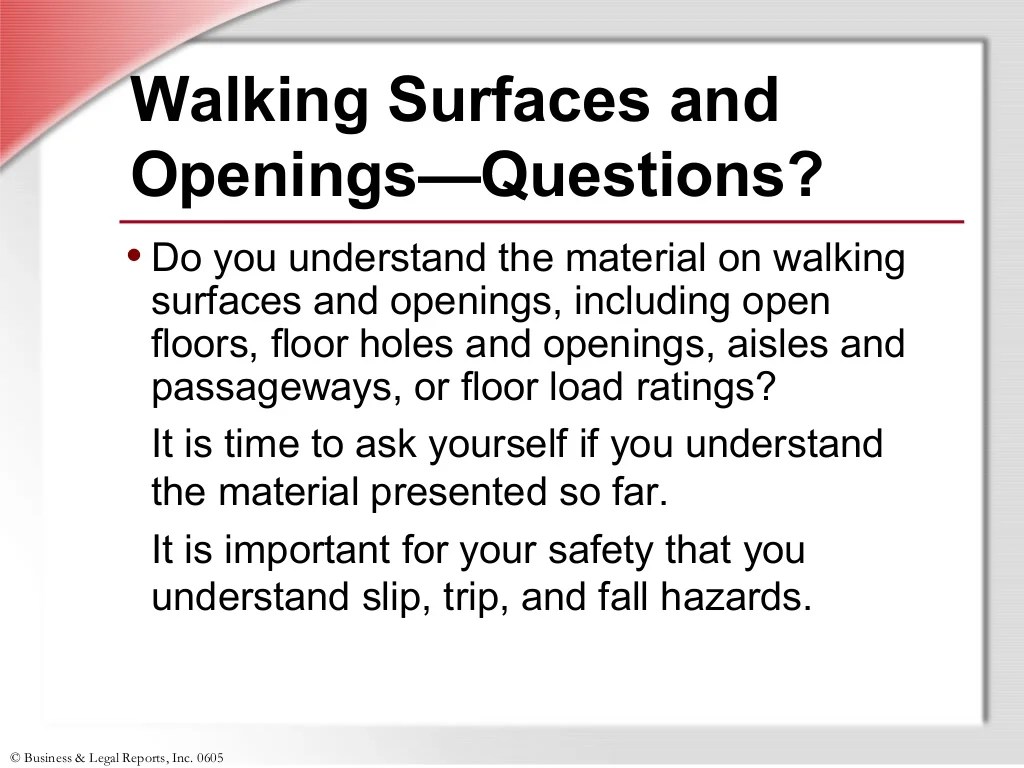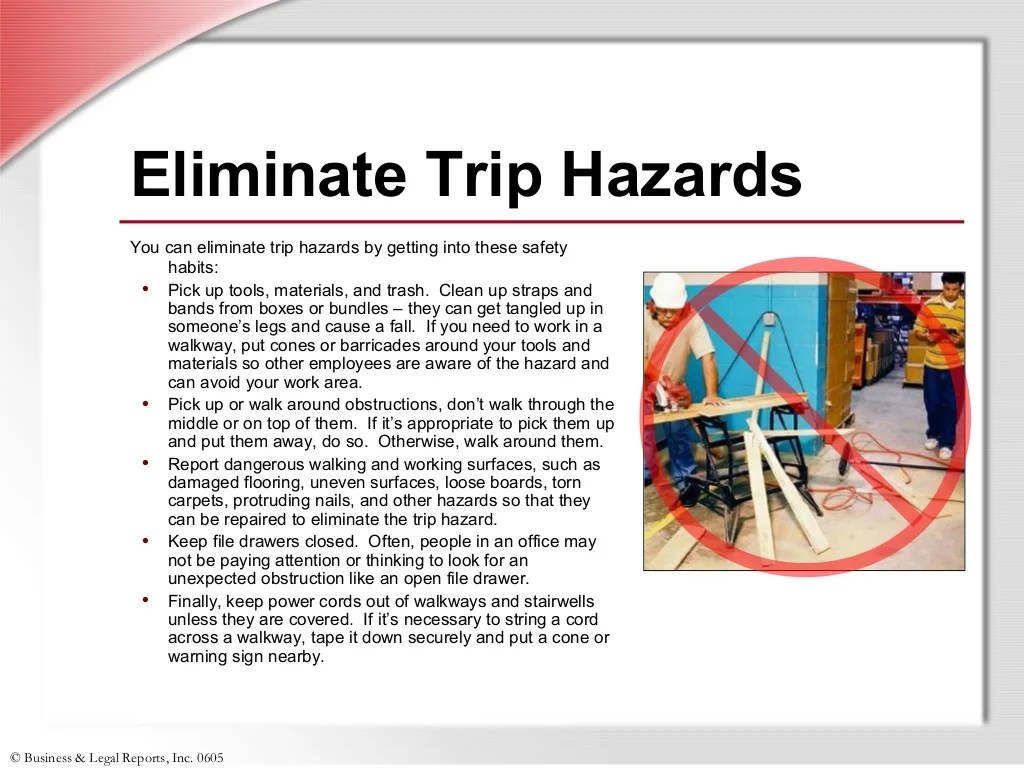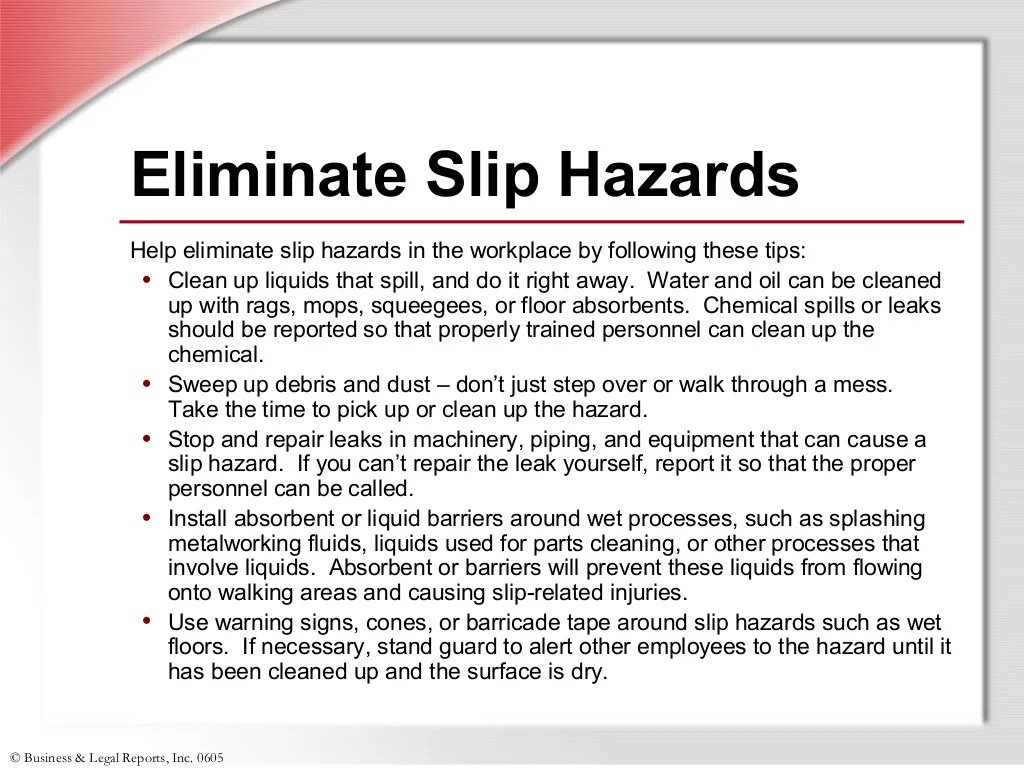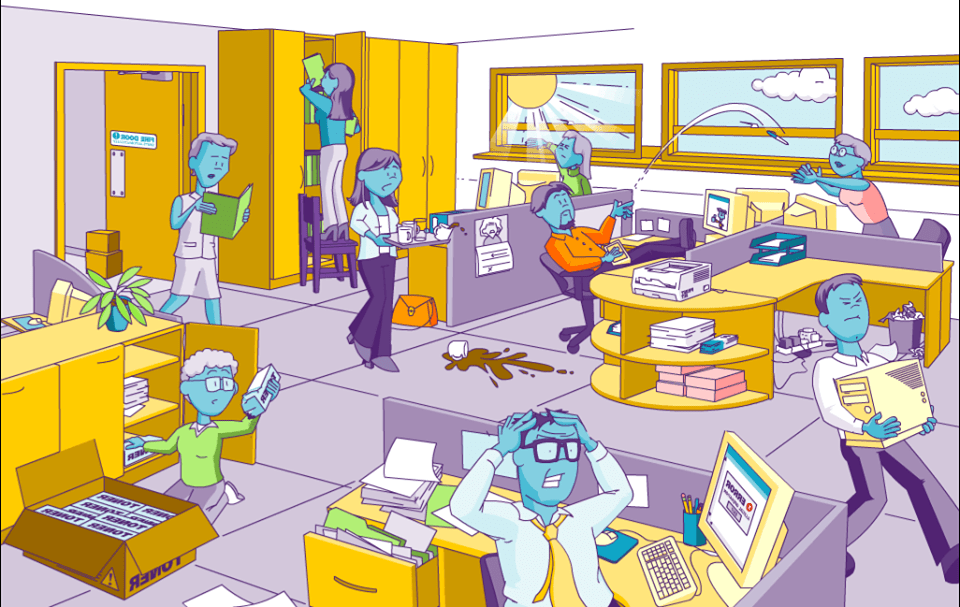Slips trips and falls quiz answers – Delving into slips, trips, and falls quiz answers, this guide empowers you with crucial knowledge to prevent these common workplace hazards. By understanding the causes, risks, and consequences, you can effectively implement preventive measures and create a safer work environment.
From identifying common causes to assessing risk factors and implementing preventive measures, this comprehensive guide covers all aspects of slips, trips, and falls prevention. Gain insights into the potential consequences and costs associated with these incidents, and learn how to design a comprehensive prevention program.
Identifying Common Causes of Slips, Trips, and Falls

Slips, trips, and falls are common accidents that can result in serious injuries. Understanding the causes of these incidents is crucial for preventing them from occurring.
Footwear
Inappropriate footwear is a major contributing factor to slips, trips, and falls. Shoes with worn-out soles, high heels, or slippery surfaces can increase the risk of losing balance and falling.
Flooring Conditions
Uneven surfaces, slippery floors, and loose rugs can create hazards that can lead to trips and falls. Wet or icy surfaces can also increase the risk of slipping.
Lighting
Poor lighting can make it difficult to see potential hazards, such as obstacles or uneven surfaces, which can increase the risk of tripping or falling.
Assessing Risk Factors and Implementing Preventive Measures

Assessing risk factors and implementing preventive measures are crucial steps in preventing slips, trips, and falls. This involves identifying potential hazards, evaluating their severity, and taking appropriate actions to mitigate risks.
To assess risk factors, conduct regular inspections of work areas, paying attention to factors such as uneven surfaces, slippery floors, poor lighting, and clutter. Involve employees in the process to gain insights into specific areas of concern.
Implementing Preventive Measures
Once risk factors have been identified, implement preventive measures to address them. These measures may include:
- Signage:Post clear and visible signs to warn of potential hazards, such as slippery surfaces or uneven floors.
- Training:Educate employees on proper walking techniques, safe work practices, and the importance of reporting hazards.
- Equipment Maintenance:Regularly inspect and maintain equipment, including ladders, stairs, and floor mats, to ensure they are in good working condition.
- Housekeeping:Keep work areas clean and free of clutter, spills, and debris to prevent tripping hazards.
- Ergonomic Improvements:Design work areas with proper ergonomics to reduce fatigue and improve balance.
- Use of Non-Slip Surfaces:Install non-slip flooring or apply anti-slip treatments to areas with high foot traffic.
- Lighting Improvements:Ensure adequate lighting to improve visibility and reduce the risk of slips and trips.
- Use of Handrails and Grab Bars:Install handrails and grab bars in areas where there is a risk of falling, such as stairs and elevated platforms.
- Regular Safety Inspections:Conduct regular safety inspections to identify and address potential hazards.
Understanding the Consequences and Costs of Slips, Trips, and Falls: Slips Trips And Falls Quiz Answers

Slips, trips, and falls are a major cause of workplace injuries, resulting in significant consequences and costs for businesses and individuals.
The potential consequences of slips, trips, and falls range from minor injuries to severe or even fatal ones. Common injuries include bruises, sprains, fractures, and head injuries. These injuries can lead to lost productivity, absenteeism, and reduced employee morale.
Direct Costs
- Medical expenses (treatment, rehabilitation, medication)
- Compensation payments (lost wages, disability benefits)
- Property damage (equipment, materials)
Indirect Costs, Slips trips and falls quiz answers
- Lost productivity (reduced output, overtime pay)
- Absenteeism (replacement workers, training costs)
- Increased insurance premiums
- Legal expenses (litigation, settlements)
- Damage to reputation
Quantifying the costs associated with slips, trips, and falls can be challenging due to the variety of factors involved. However, studies have shown that the average cost of a workplace fall can range from $1,000 to over $100,000.
Designing a Comprehensive Slip, Trip, and Fall Prevention Program
A comprehensive slip, trip, and fall prevention program is crucial for safeguarding workplaces and preventing injuries. It involves a systematic approach that incorporates hazard identification, risk assessment, employee training, and continuous improvement.
Hazard Identification
Hazard identification is the foundation of a successful prevention program. It involves identifying potential hazards that could lead to slips, trips, and falls. These hazards can include:
- Uneven surfaces
- Slippery floors
- Poor lighting
- Obstructions
- Cluttered walkways
Risk Assessment
Once hazards have been identified, they must be assessed to determine the level of risk they pose. Risk assessment considers the likelihood and severity of potential injuries. Factors to consider include:
- Frequency of exposure to the hazard
- Nature of the hazard (e.g., slippery surface, uneven surface)
- Potential consequences of a slip, trip, or fall
Employee Training
Employee training is essential for ensuring that employees are aware of the hazards in their workplace and the steps they can take to prevent slips, trips, and falls. Training should cover:
- Hazard recognition
- Safe work practices
- Use of personal protective equipment (PPE)
- Reporting and investigating incidents
Successful Prevention Programs
Numerous industries have successfully implemented comprehensive slip, trip, and fall prevention programs. Examples include:
- Healthcare:Hospitals have reduced falls by implementing measures such as fall risk assessments, staff training, and improved flooring.
- Construction:Construction sites have improved safety by implementing hazard identification programs, using non-slip surfaces, and providing fall protection equipment.
- Retail:Retail stores have reduced slips and trips by implementing regular floor cleaning, using anti-slip mats, and providing clear walkways.
Evaluating the Effectiveness of Prevention Measures

Evaluating the effectiveness of slip, trip, and fall prevention measures is crucial for continuous improvement and optimization. It ensures that implemented strategies are meeting their intended goals and identifies areas for further enhancements. Several methods can be employed to assess the effectiveness of these measures:
Metrics
Tracking key metrics provides quantifiable data to measure progress and identify trends. These metrics may include:
- Number of slips, trips, and falls reported
- Days lost to work due to slip, trip, and fall-related injuries
- Injury severity rates
- Worker compensation costs
Audits
Regular audits involve inspecting workplaces and reviewing safety protocols to identify potential hazards and areas for improvement. Audits should focus on:
- Floor conditions
- Lighting
- Walking surfaces
- Signage
- Training programs
Employee Feedback
Gathering feedback from employees can provide valuable insights into the effectiveness of prevention measures. Surveys, focus groups, and informal discussions can identify areas where employees feel vulnerable or where improvements can be made.By combining these methods, organizations can gain a comprehensive understanding of the effectiveness of their slip, trip, and fall prevention programs.
This information can then be used to make data-driven decisions, refine strategies, and continuously improve safety outcomes.
Helpful Answers
What are the most common causes of slips, trips, and falls?
Common causes include slippery surfaces, uneven flooring, poor lighting, and improper footwear.
How can I assess the risk factors associated with slips, trips, and falls?
Conduct a thorough risk assessment by identifying potential hazards, evaluating the likelihood and severity of incidents, and implementing appropriate controls.
What are the potential consequences of slips, trips, and falls?
Consequences range from minor injuries to severe accidents, lost productivity, increased insurance costs, and legal liabilities.